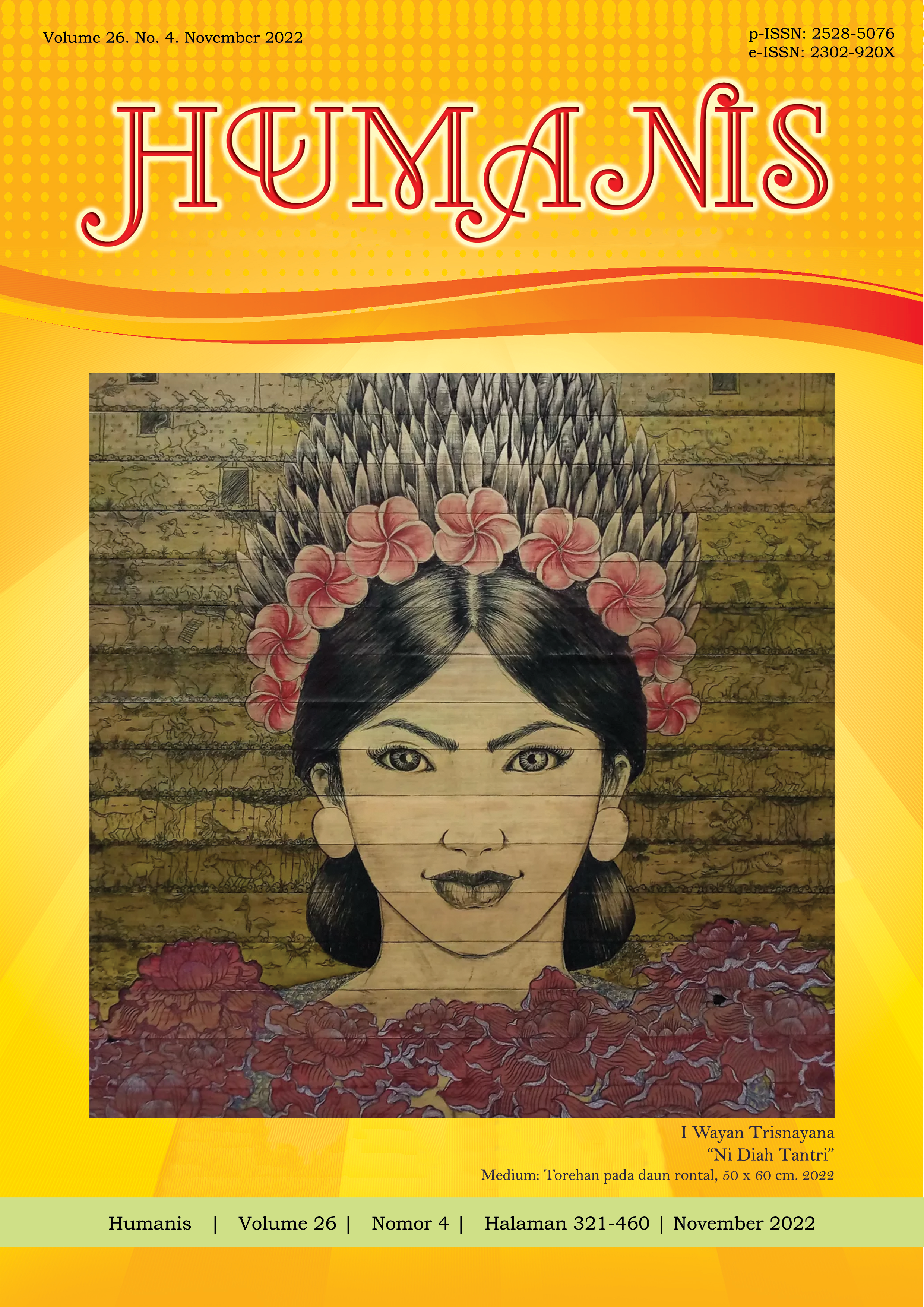Potensi Situs Arkeologi Gua Hunian Sebagai Daya Tarik Wisata di Pulau Nusa Penida, Bali
Abstract
The existence of archaeological sites on the island of Nusa Penida has an important role in the history of human civilization. These sites have significance for science as well as history, but their potential economic significance has not been explored. This paper aims to show the existence of archaeological sites on the island of Nusa Penida and also the economic importance of these sites. One of the potentials that can be developed is as a tourism object that still pays attention to the principles of conservation and cultural resource management (CRM). The research method is in the form of data collection with observation techniques and also literature study, analyzing qualitative data and presenting data in an explanatory descriptive manner. The results showed the potential of archaeological sites as a tourist attraction. Some of the sites that have the most potential to be developed are the Song Gede Site, the Japanese Cave Complex Site, and the Song Toya Pakeh underwater cave site.
Downloads
References
Arisanti, N., Rema, I. N., Suarbhawa, I. G. M., & Hidayah, A. R. (2021). The Main Issues In Archaeological Resources Management Based On Indigenous Community in Central Sumba District. Proceedings of the 9th Asbam International Conference (Archeology, History, & Culture In The Nature of Malay) (ASBAM 2021).
Damayanti, I. A. K. W., Wijaya, I. N., & Kanca, I. N. (2015). Strategi Pengembangan Pulau Nusa Penida Sebagai Kawasan Pariwisata yang Berkelanjutan. Jurnal Sosial Dan Humaniora, 5(2), 136–145.
Fletcher, J., Fyall, A., Gilbert, D., & Wanhill, S. (2018). Tourism : Principles and Practice (Sixth Edit). Pearson Education Limited.
Gayatri, I. A. D. L. (2022). Implementasi Kebijakan Pengembangan Pariwisata Kawasan Nusa Penida di Kabupaten Klungkung Provinsi Bali. Institut Pemerintahan Dalam Negeri.
Gede, I. D. K. (2019). Penghunian Pulau Nusa Penida Sebagai Jalur Migrasi Ke Wallacea. Laporan Penelitian Arkeologi.
Hadiwidjojo, M. . P., Samodra, H., & Amin, T. . (1998). Peta Geologi Lembar Bali.
Harbowo, D. ., Alouw, S., Soetamanggala, T. G., & Gerungan, A. (2017). Stiva Cave: A New Discover of Prehistoric Hominid Underwater Cave. Journal of Geoscience, Engineering, Environment, and Technology, 2(2), 137–140.
Hartatik. (2014). Pemberdayaan Masyarakat dalam Pengelolaan Sumberdaya Arkeologi: Sebuah Retrospeksi. Naditira Widya, 8(2), 95–104.
Hidayah, A. R. (2017). Pemanfaatan Kerang dan Tumbuhan di Situs Gua Gede Pulau Nusa Penida, Bali. Gadjah Mada University.
Hidayah, A. R., & Gede, I. D. K. (2011). Situs Gua Gede, Dusun Pendem, Desa Pejukutan, Nusa Penida, Bali. Laporan Penelitian Arkeologi. Denpasar. Balai Arkeologi Bali.
Hidayah, A. R., Gede, I. D. K., Haribuana, I. P. Y., Bawono, A., Sutikna, J. T., Suarbhawa, I. G. M., & Arisanti, N. (2021). Song Gede : Situs Gua Hunian Sejak Masa Pleistosen Akhir di Pulau Nusa Penida, Bali. Purba Widya, 10(147), 103–118.
Hobson, E. (2004). Conservation and Planning: Changing Values in Policy and Practice. Spon Press Taylor and Francis Group.
Howard, P. (2003). Heritage: Management, Intepretation, Identity. Continuum.
Keling, G., Sumerata, I. W., Hidayah, A. R., Haribuana, I. P. Y., Savitri, M., Bawono, R. A., Harbowo, D. G., Wahyuni, I. G. A. A. E. S., Krishnanda, R. M., & Latra, K. (2021). Penelitian Arkeologi Bawah Air: Penelusuran Bukti Okupasi Gua Stiva di Wilayah Nusa Penida, Kabupaten Klungkung, Provinsi Bali.
Perda Kab. Klungkung No 1 Th 2013, 1 (2013).
Muhammad, N. (2009). Orientasi Manajemen Sumberdaya Arkeologi di Indonesia. Papua, 1(1), 1–10.
Perda Prov. Bali No 10 Th 2015, (2015).
PP No 50 Th 2011, (2011).
Suantika, I. W. (2012). Pengelolaan Sumberdaya Arkeologi. Forum Arkeologi, 25(3), 185–205.
Suastika, I. M. (2008). Penelitian Pola Hunian Gua di Nusa Penida. Berita Penelitian Arkeologi.
Sulistyanto, B. (2009). Penerapan Cultural Resource Management dalam Arkeologi. Amerta, 27(1), 16–33.
Supratikno, R., Djuwita, W., & Yulianto, K. (2012). Model Pengelolaan Situs Arkeologi Untuk Memaksimalkan Pemanfaatan Publik: Studi Kasus Kawasan Trowulan. In S. Rahardjo, L. D. N. Widiati, A. Akbar, & S. S. Prabandari (Eds.), Arkeologi Untuk Publik (pp. 151–171). Ikatan Ahli Arkeologi Indonesia.
Tim. (2020). Kecamatan Nusa Penida dalam Angka 2020. Badan Pusat Statistik Kabupaten Klungkung.
UUCB No 11 Th 2010, (2010).


















